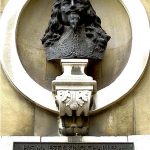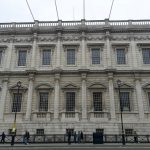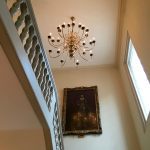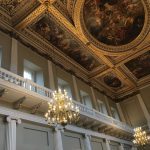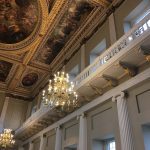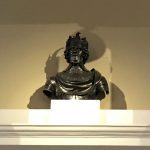Banqueting House on Whitehall
Many years ago I started reading books about the iconic buildings in London not only because I love history, but I enjoy taking my visiting family and friends around town, and I wanted to be able to tell them about all these remarkable buildings that we pass by as we do the city tour. The Banqueting House on Whitehall is just one of those historic buildings in Westminster that was on my ‘must visit‘ list, and a couple of months ago I had the opportunity of finally visiting it for the first time. It is the only building remaining of The Palace of Whitehall that was destroyed by fire in 1698. Whitehall Palace was the original 13th century London seat of the Archbishops of York, and later became the residence of Cardinal Wolsey, King Henry VIII’s right hand man. After Wolsey’s fall in 1529 (he wasn’t able to convince the Pope to grant Henry a petition for a divorce), the palace became a royal residence. It was enlarged by Henry VIII, and became the largest palace in the world, bigger than Versailles and The Vatican. It was at Whitehall Palace where Henry VIII died in 1547, Charles I was beheaded in 1649, and where Oliver Cromwell died in 1658.
Above picture shows the facade of the Banqueting House and the bust of King Charles I mounted above the entrance to the building, the arch through which the king walked to his execution.
There’s two huge paintings of Charles I and Charles II hanging on the walls above the staircase leading to the first floor. The ceiling was the first thing that caught my attention as soon as I entered the hall.
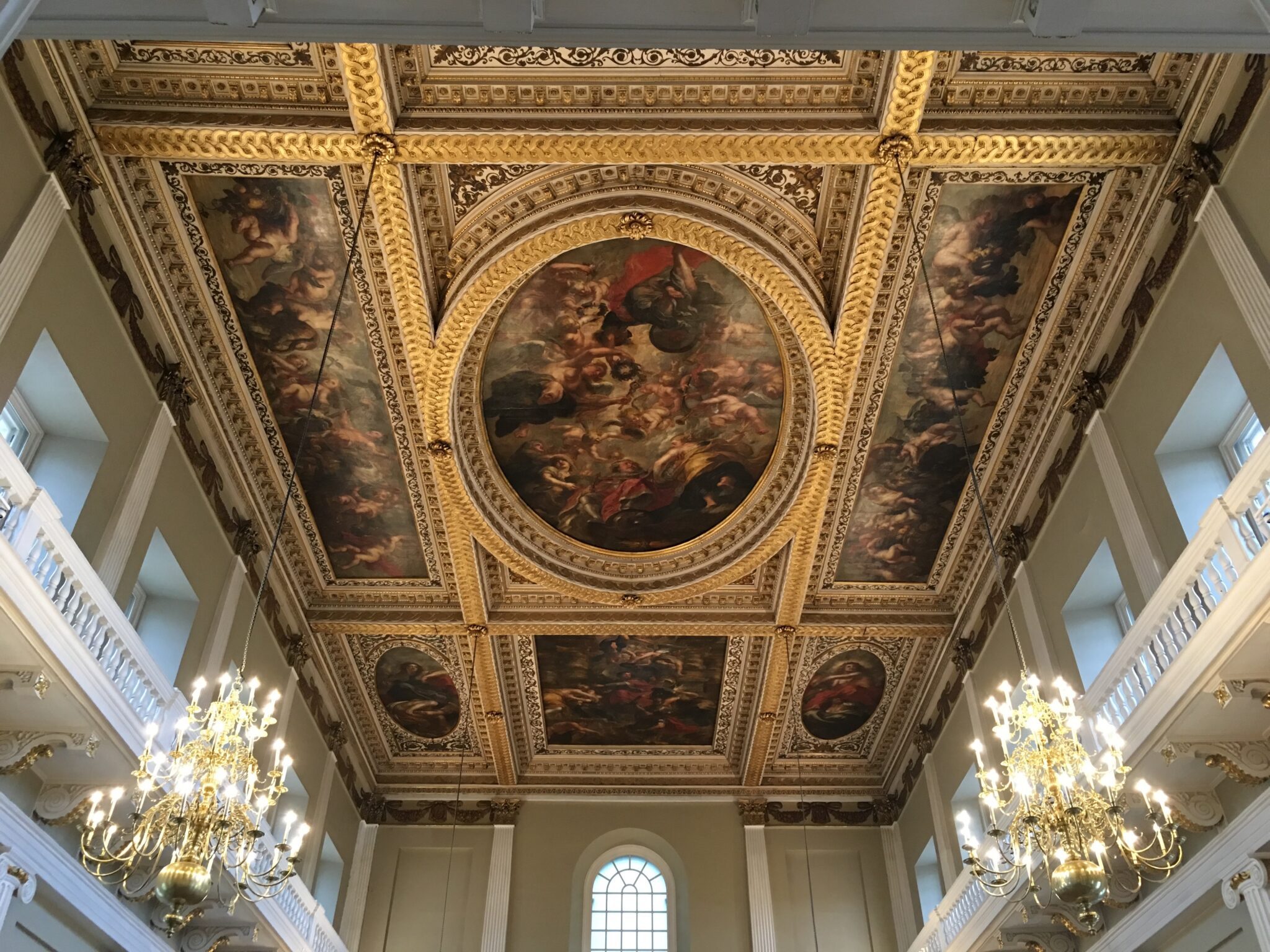 The first Stuart king, King James I, wanted to show the world that his reign could match anything in Renaissance Europe, and he commissioned an English architect named Iñigo Jones, to build a Palladian masterpiece. It was completed in 1622, and its white and black facade (now it’s more greyish) appalled the Londoners who were more used to the friendly and warm brownish/orangey Tudor brick buildings. The Portland facade we see today was added by another English architect who specialised in the Neo- Classical style, Sir John Soane, in 1829.
The first Stuart king, King James I, wanted to show the world that his reign could match anything in Renaissance Europe, and he commissioned an English architect named Iñigo Jones, to build a Palladian masterpiece. It was completed in 1622, and its white and black facade (now it’s more greyish) appalled the Londoners who were more used to the friendly and warm brownish/orangey Tudor brick buildings. The Portland facade we see today was added by another English architect who specialised in the Neo- Classical style, Sir John Soane, in 1829.
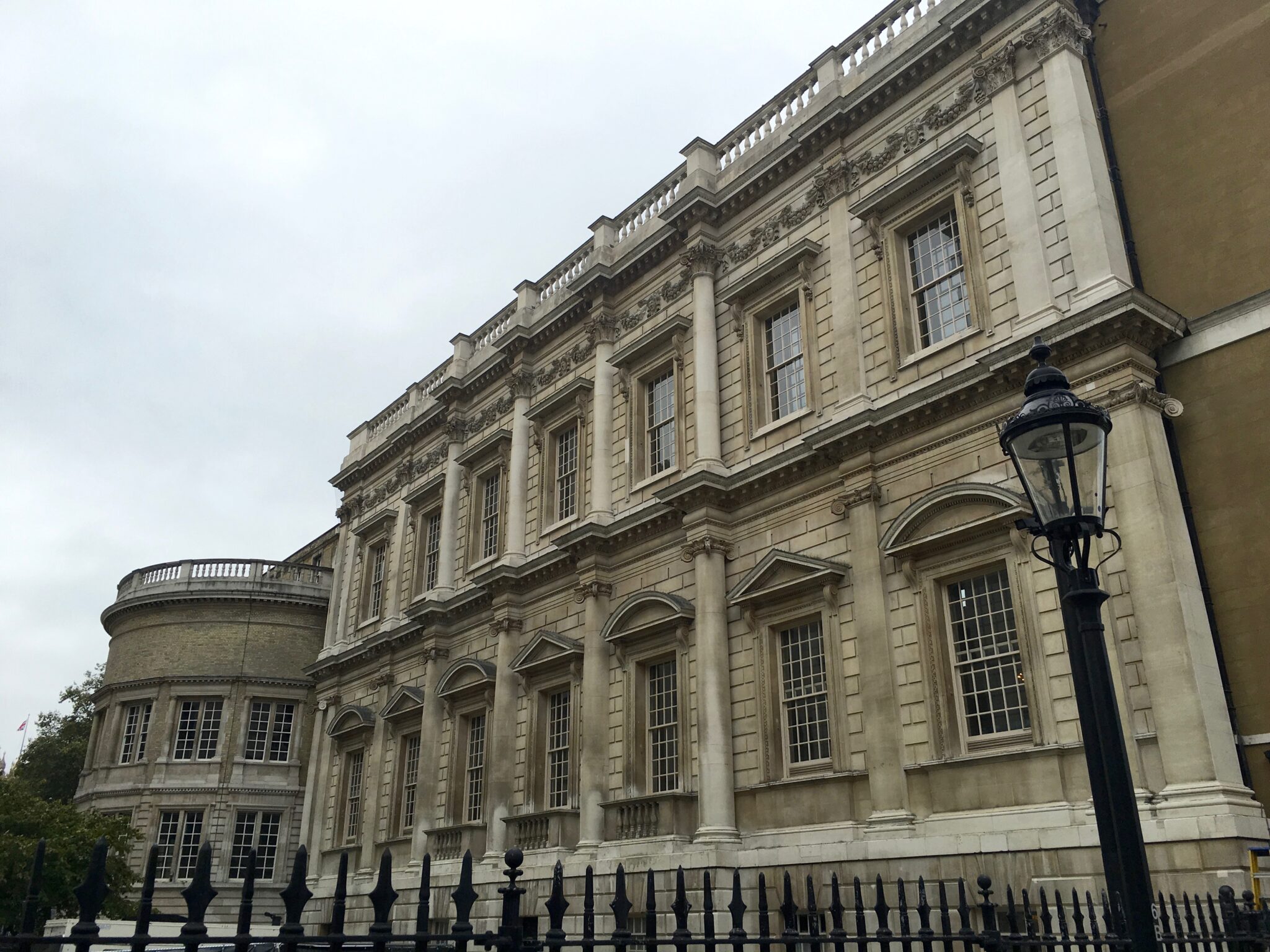 Above picture is the side of the building that’s facing the Ministry of Defence.
Above picture is the side of the building that’s facing the Ministry of Defence.

Today this building is famous for one reason — it was right in front of this building that the beheading of Charles I took place. He was the only British monarch to be put to death by his own people.
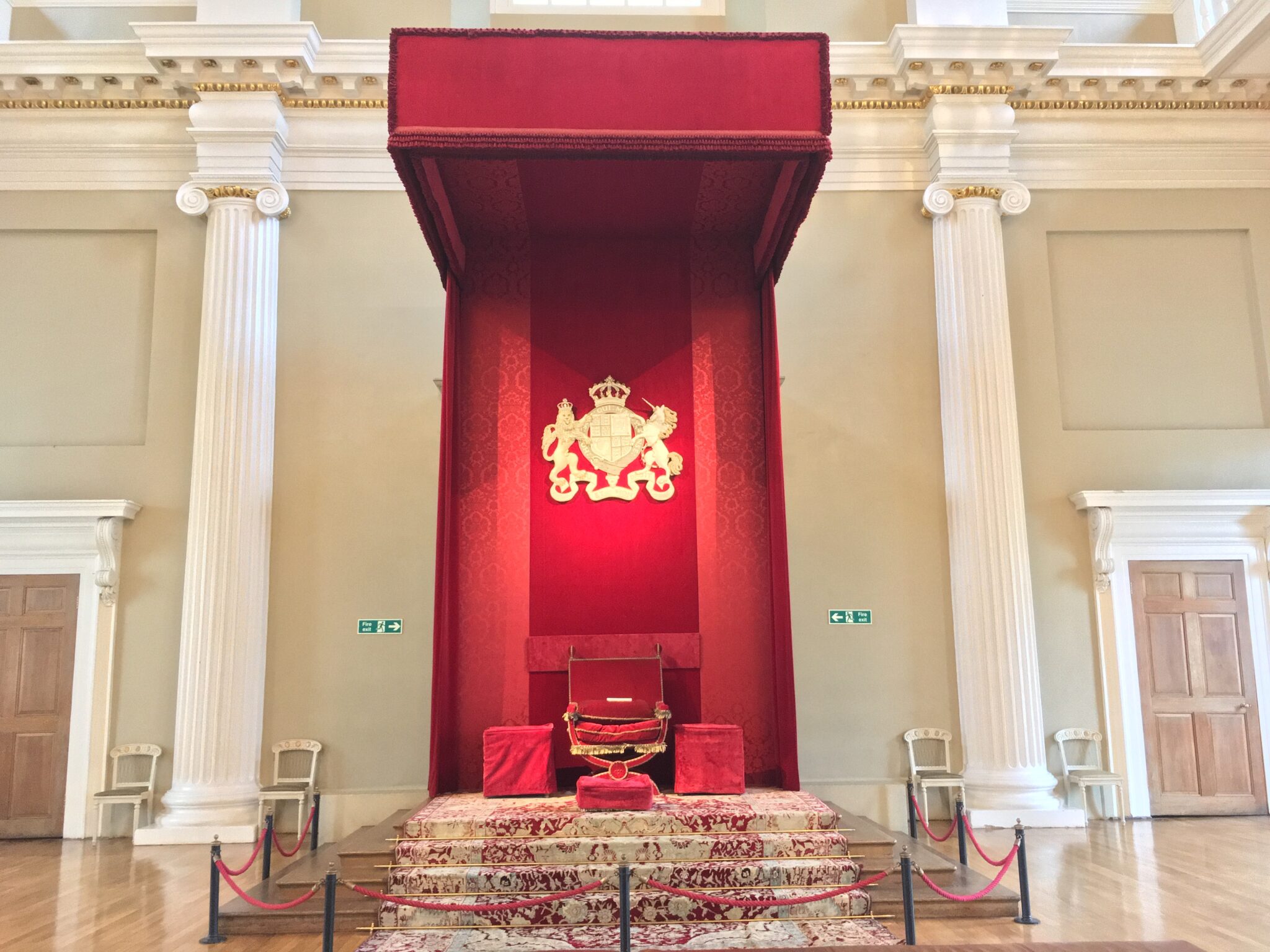
The breathtaking nine allegorical paintings on the ceiling by Sir Peter Paul Rubens, a Flemish Baroque painter, were commissioned by King Charles l in 1629 to celebrate the life of his father, King James l.
Most historians claim that Oliver Cromwell had chosen this building as a place of the king’s execution because the small enclosed space in front of the windows made it easier for the soldiers to control the crowd. From what I’ve read in another book, Cromwell and his council ordered Charles I’s execution to take place at Banqueting House simply because this building had come to symbolise the Stuart reign. I believe however, it was a political act on the part of the Republican leaders to get rid of the British monarchy in front of the building which had been considered a crown jewel of the Stuart kings.
The bust of James I and a painting of Charles I, are both in display above the doors at the Banqueting Hall.
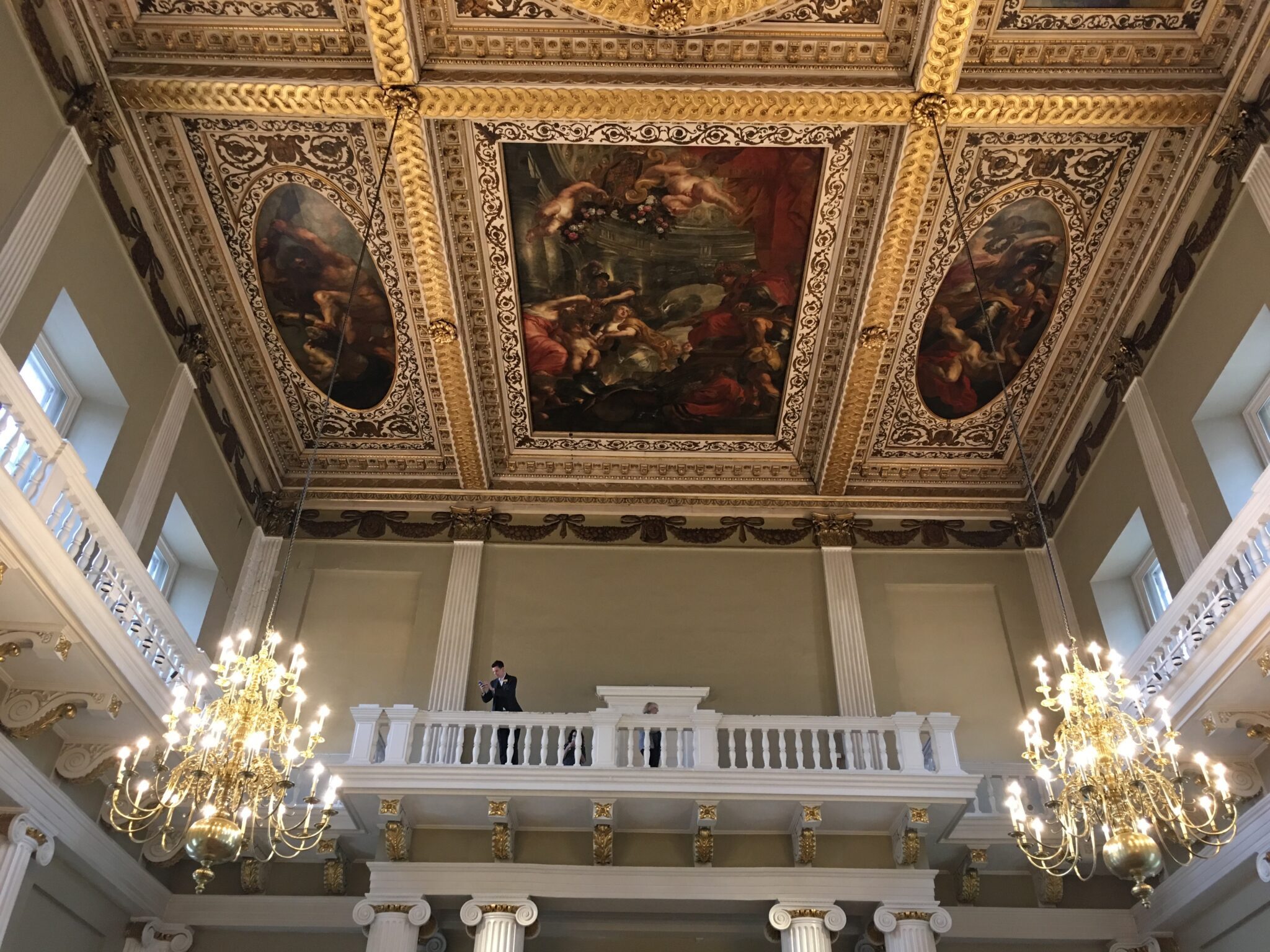 Today, those who claim for the abolition of the monarchy (aka the Republicans) seem to forget that Britain has been once a republic, which sadly only lasted for 11 years. The people realised they wanted the monarchy restored to the throne and brought Charles I’s son back from exile. However, that was not the end of the story. After Charles II, his son James l, a staunch Catholic, was deposed and replaced by another Protestant king – William III.
Today, those who claim for the abolition of the monarchy (aka the Republicans) seem to forget that Britain has been once a republic, which sadly only lasted for 11 years. The people realised they wanted the monarchy restored to the throne and brought Charles I’s son back from exile. However, that was not the end of the story. After Charles II, his son James l, a staunch Catholic, was deposed and replaced by another Protestant king – William III.
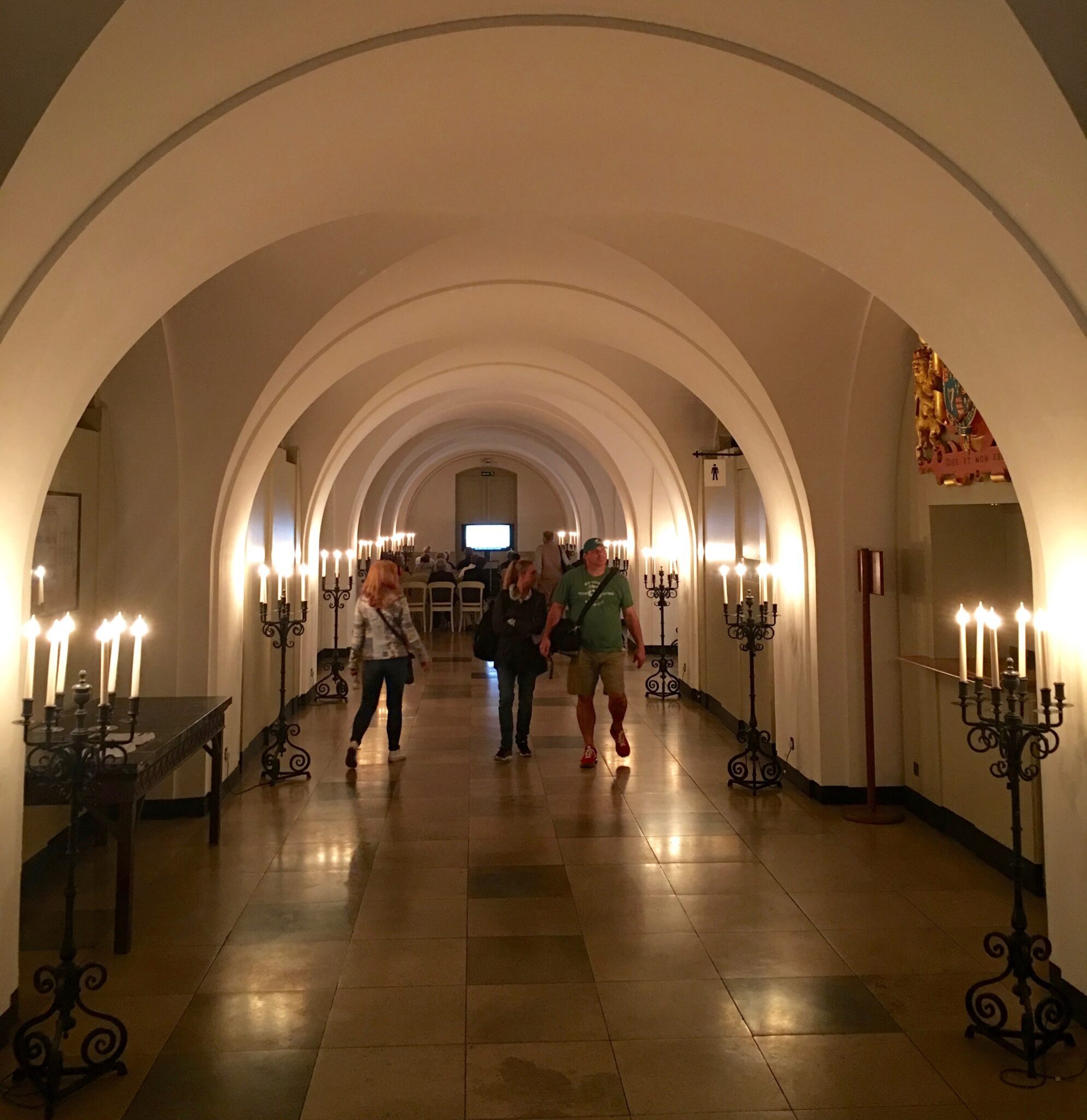 The ground floor of the building.
The ground floor of the building.
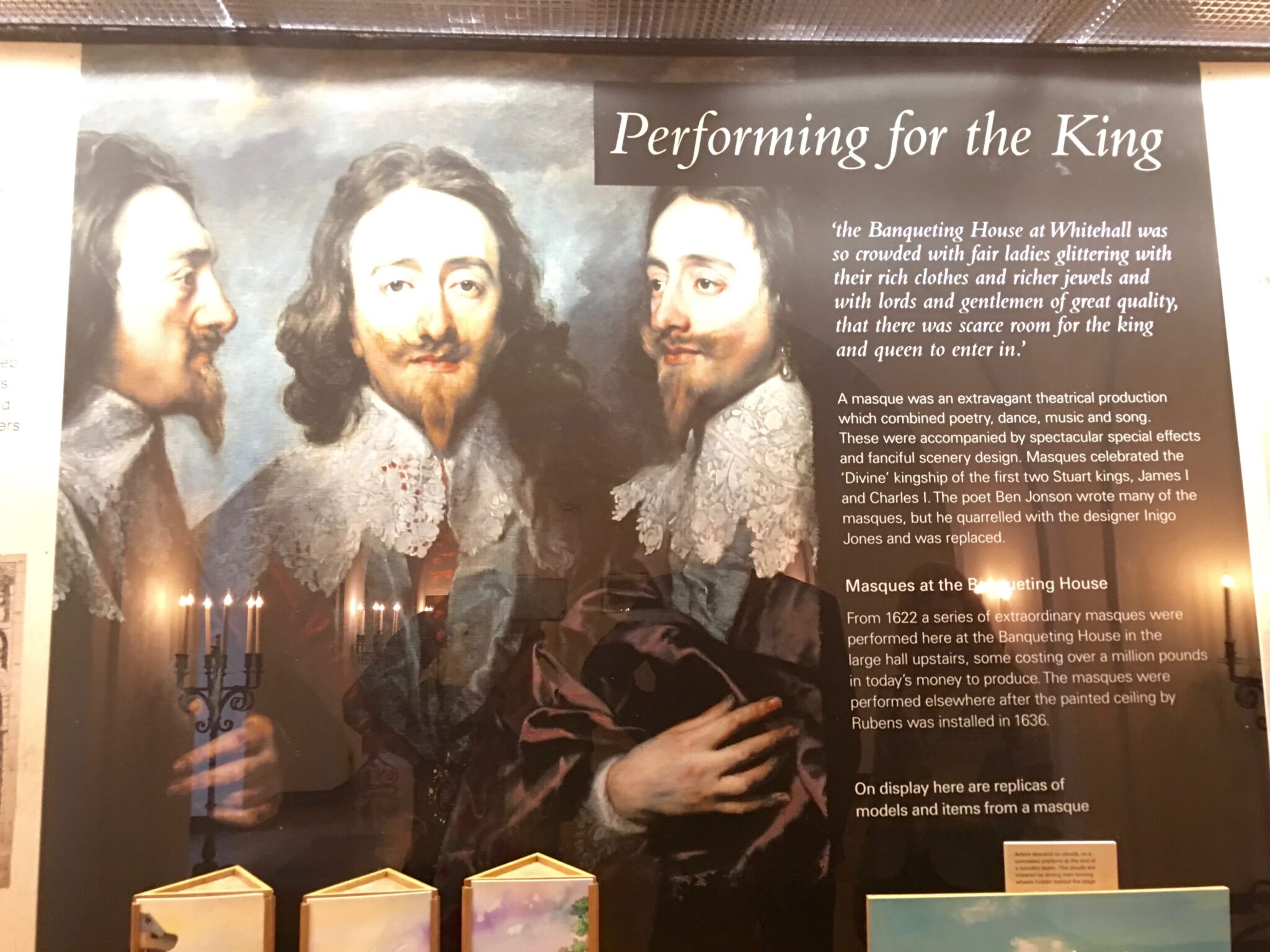 Following recent restoration, archeologists have recovered some artefacts — remnants of its former splendour. Banqueting House is now considered one of the first Renaissance buildings in England. In the middle of the hall is a massive mirror where the visitors can have a closer look at the Rubens paintings on the ceiling. It was breathtaking.
Following recent restoration, archeologists have recovered some artefacts — remnants of its former splendour. Banqueting House is now considered one of the first Renaissance buildings in England. In the middle of the hall is a massive mirror where the visitors can have a closer look at the Rubens paintings on the ceiling. It was breathtaking.
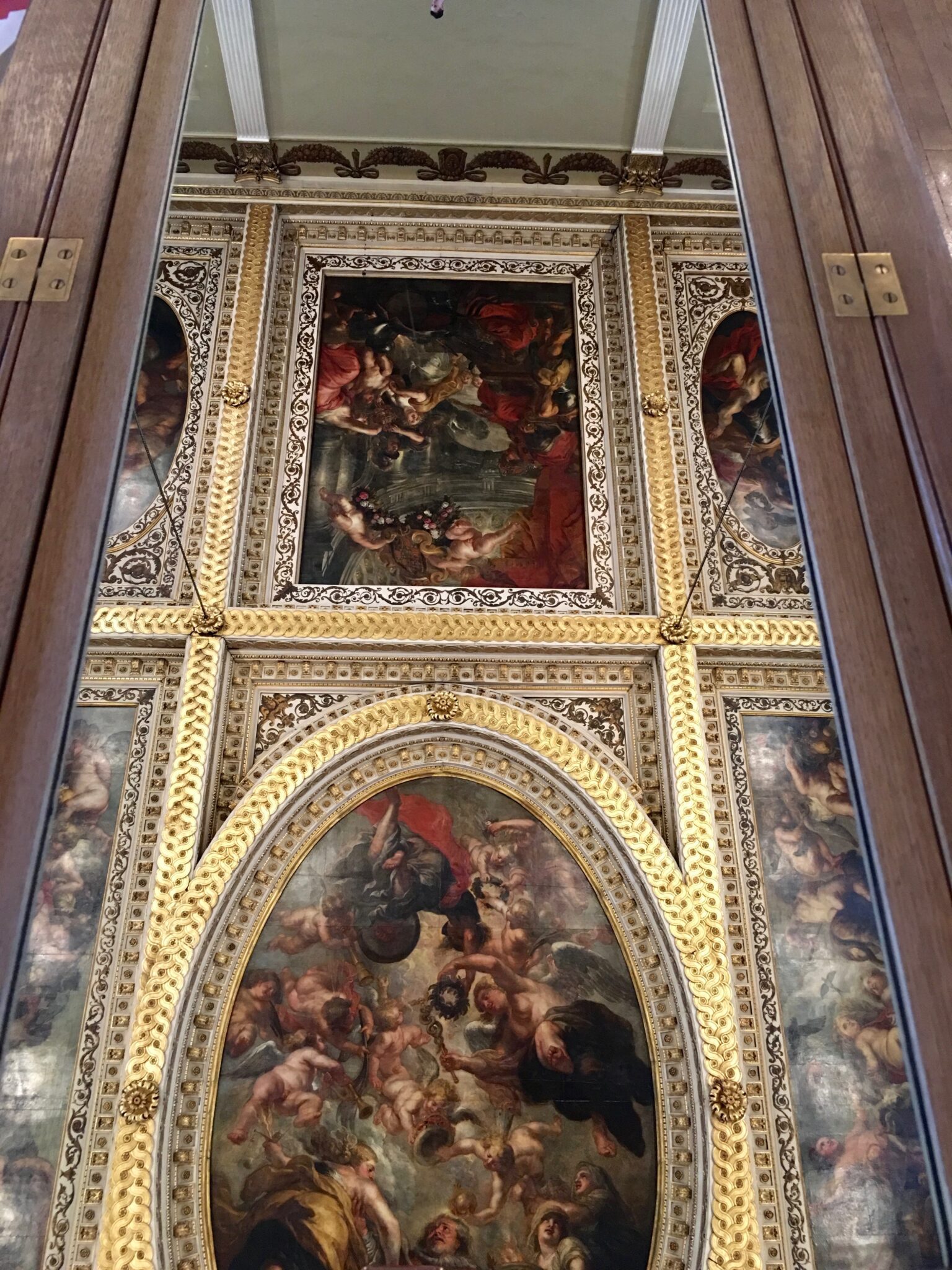 I stood here for a good 10-15 minutes just to admire the 381 year-old paintings. There’s nothing like it anywhere in England. Banqueting House is indeed worth visiting to view the spectacular ceiling paintings. And if you’re like me, you might want to wait for that one day each year (sometime in September), when they open the building to the public free of charge. 😉
I stood here for a good 10-15 minutes just to admire the 381 year-old paintings. There’s nothing like it anywhere in England. Banqueting House is indeed worth visiting to view the spectacular ceiling paintings. And if you’re like me, you might want to wait for that one day each year (sometime in September), when they open the building to the public free of charge. 😉
